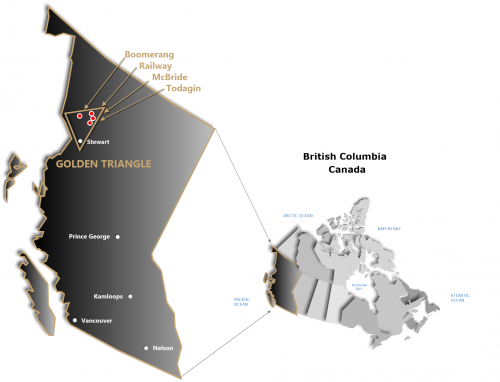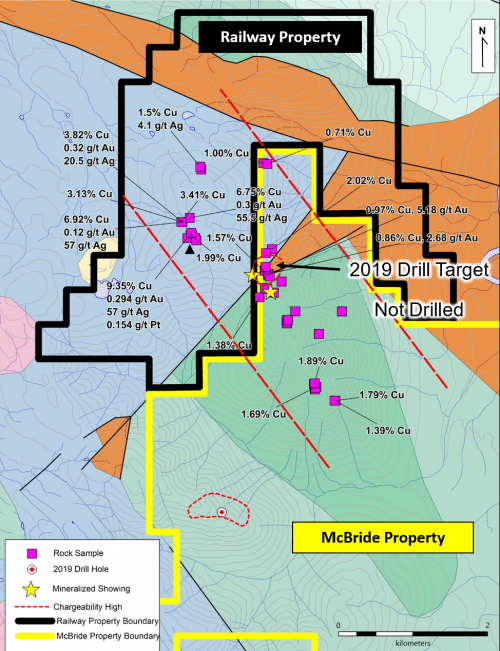In June of 2022 Hawkeye closed upon the sale of its McBride property (“Property) which included the sale of its Railway, Boomerang and Todagin properties to Newcrest Red Chris Mining Ltd. (“Newcrest”), a wholly-owned subsidiary of Newcrest Mining Limited (Australian Stock Exchange: NCM, Toronto Stock Exchange: NCM, Papua New Guinea Exchange: NCM), for total consideration of CAD$1,400,000 for all four properties. Under terms of the Asset Purchase Agreement Hawkeye will retain a 2% Net Smelter Royalty (NSR) on the McBride property which is subject to buy-down provisions. For details on these provisions please click on the ROYALTIES link above.
The McBride Project
The McBride Project is situated in the northeastern corner of the Golden Triangle and situated approximately 12 kilometres north of the Red Chris Cu-Au mine, 10 kilometres east and northeast of the North Rok and Rok occurrences, and 18 kilometres east of the Saddle discovery of Newmont (GT Gold). The McBride claims are also contiguous to southeastern border of the Railway property. The promising northern IP chargeability target located on the northwest border of the McBride property which was not drilled in 2019 (see maps to left and below) due to the onset of unfavorable weather conditions extends onto the Railway property. This trend continues in a northwest direction for another two kilometres towards Thatue Mountain.
The principal occurrences in the region are hosted within the Hazelton Group and underlying Stuhini Group
commonly associated with structural controls and intrusions. The Jurassic-age Hazelton basalt, andesite dacite and rhyolite flows and pyroclastics unconformably overlie either Triassic Stuhini marine sediments and volcanics, or older Paleozoic Devonian to Permian sandstone, siltstone, conglomerate, limestone and marble. Hazelton lithologies are overlain on Thatue Mountain by Upper Jurassic Bowser subaerial to deep marine sediments. Monzonite, diorite to gabbro intrusions of Triassic to Late Jurassic age, and Tertiary volcanics intrude the above packages. Numerous structural breaks with carbonate and silica alteration transect the Hazelton volcanics.




